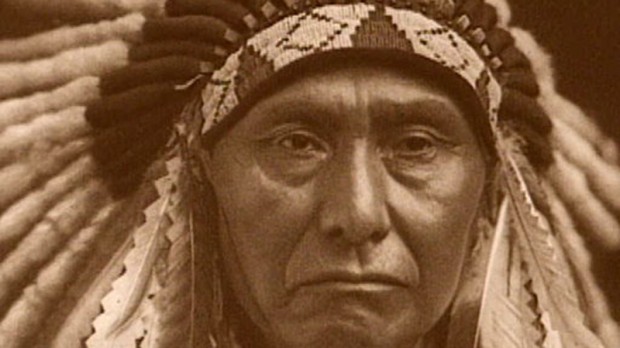Coming Into Light
Coming Into Light is an extraordinarily well put together introduction to the life and work of early photographer and film maker Edward S. Curtis. Originally created for the American Masters TV series on PBS, the film is now available as a standalone documentary. I’m very glad it is, because this is quite a remarkable piece […]

Coming Into Light is an extraordinarily well put together introduction to the life and work of early photographer and film maker Edward S. Curtis. Originally created for the American Masters TV series on PBS, the film is now available as a standalone documentary. I’m very glad it is, because this is quite a remarkable piece of work, focussing on a true photographic pioneer.
Edward S. Curtis is best known for his twenty volume work, The North American Indian. Initially financed by a $75,000 investment from John Pierpont Morgan (J.P. Morgan), The North American Indian took thirty years to produce and cost Curtis his career, his marriage and all his wealth.
In the process of creating The North American Indian, which began in 1906, Curtis visited eighty tribes and took over forty thousand images. Much of the time he travelled on horseback and horse-drawn carriage with a small team and up to a ton of equipment (he also made audio recordings and films). During the production he also made over one hundred and twenty rail trips from his home in Seattle to his publishers and financiers in New York.
This staggering stamina and determination is well documented in Coming To Light which was directed by Anne Makepeace and helped along by narrators Sheila Tousey (who is a Menominee and Stockbridge-Munsee Indian) and Bill Pullman, who reads from Curtis’ own letters and memoirs.
But, the star of this documentary is Curtis’ own work. While the photos, black & white, sepia and hand-toned often reflect the style of his time, there are many images that look quite modern, with very deliberate and controlled composition.
In fact, Curtis was a master at staging people and props in order to create compelling photographs. And, almost a century before the manipulation of images with photoshop would become popular, Curtis was using darkroom techniques to edit modern objects out of the “historical” photos he was creating.
Curtis himself was a man of humble beginnings. He only had a sixth grade education, but that didn’t stop him building his own camera at the age of twelve and then working his way from manual labour (and the early death of his father) through to starting his own successful photographic business in Seattle. In fact, his success as a society photographer was what allowed him to embark on his documentary work and gave him a style that made his images stand out from other, similar attempts to document Native American people and customs.
Initially, his work proved to be very popular and successful. Apart from the printed tomes, he presented his photos in slideshows accompanied by music. However, he also became a figure of controversy with some anthropologists questioning his methods and research.
Coming Into Light also documents a lesser known part of Curtis’s work, his landmark 1914 docudrama, In The Land Of Headhunters (which first screened seven and a half years before Nanook Of The North). Although based on a fictional narrative and riddled with historical and cultural inaccuracies, the film did contain some accurate depictions of Kwakwaka’wakw rituals, which at the time were banned (a law that stood until 1951). In The Land Of Headhunters was a commercial failure at the time but is now considered to be an important early film.
By the end of his life, interest in the kind of work Curtis produced (and the history of North American peoples in general) had waned, as had the market for expensively produced books like The North American Indian (thanks to the great depression. In fact, the bulk of the existing archive of Curtis’ work lay gathering dust in the basement of a Boston bookstore (having been sold cheaply by the Morgan estate in 1935) until it was discovered by chance in 1972.
Of course this film will appeal to anyone with an interest in photography and history. But, this is also a story about an amazingly focussed and passionate artist who overcame tremendous challenges to produce a legacy of work that has outlived the fashions of his day.




